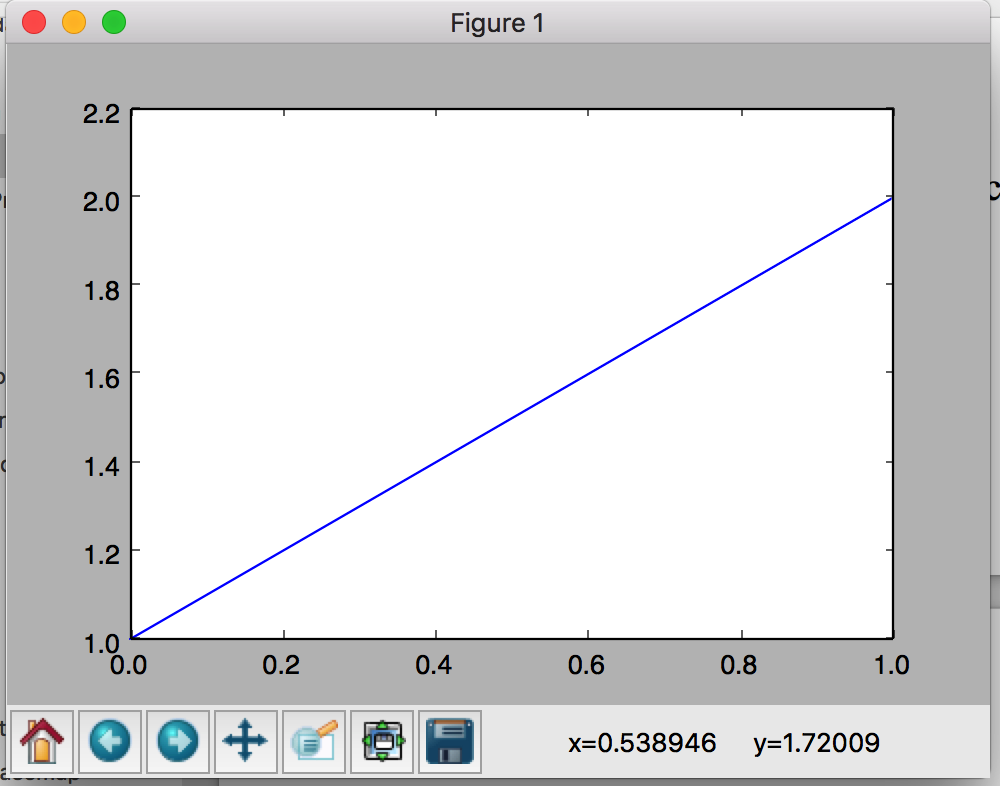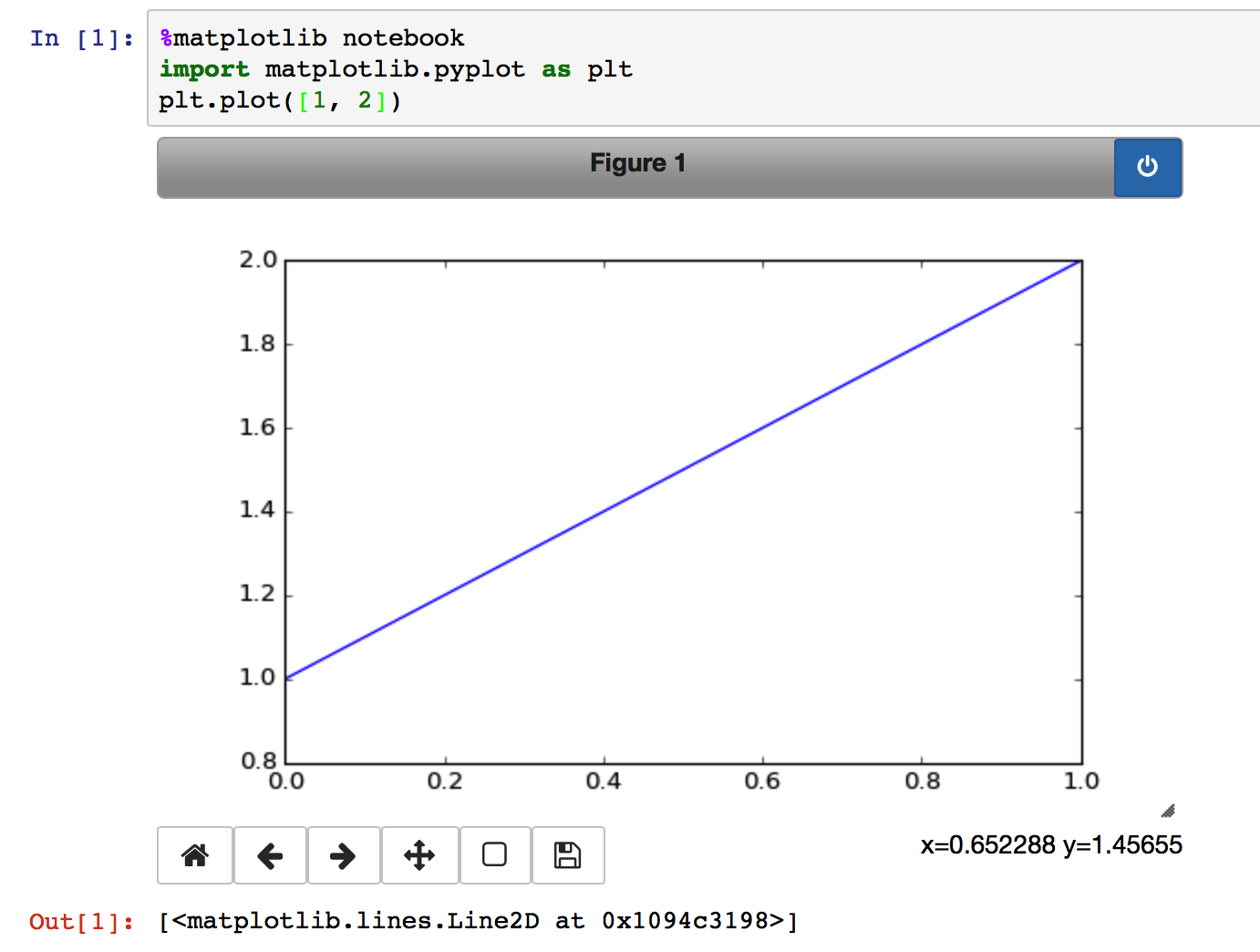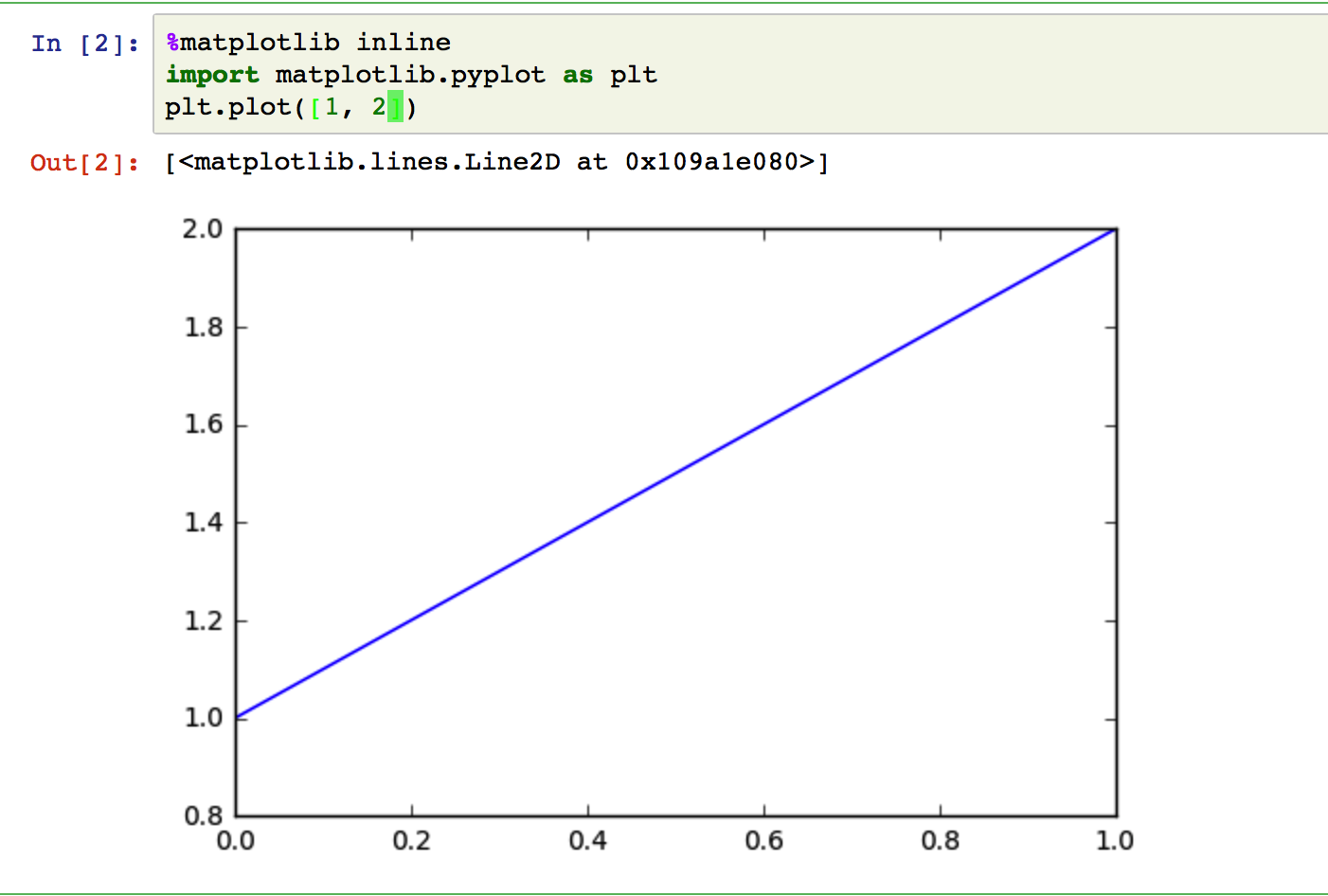一,matplotlib是什么
在python中用于數(shù)據(jù)庫(kù)可視化的2D繪圖庫(kù)。
二,安裝
http://matplotlib.org/users/installing.html
三,交互模式與非交互模式
1,非交互模式
在python shell里面執(zhí)行
import matplotlib.pyplot as plt
plt.plot([1, 2])
plt.show()
執(zhí)行show之后會(huì)打開一個(gè)GUI窗口顯示,同時(shí)交互命令會(huì)阻塞。

2,交互模式
matplotlib.is_interactive()可以查看當(dāng)前是否在交互模式;
matplotlib.pyplot.ion()用于打開交互模式;
matplotlib.pyplot.ioff()用于關(guān)閉交互模式;
import matplotlib.pyplot as plt
plt.ion()
plt.plot([1, 2])
執(zhí)行plot之后打開了一個(gè)GUI窗口,交互命令沒(méi)有阻塞,繼續(xù)執(zhí)行:
plt.plot([2, 3])
可以看到在窗口里面再畫了一條線。
也就是在非交互模式,需要一次畫好再調(diào)用show顯示;而交互模式在每次繪制后都能實(shí)時(shí)看到效果。
3,ipython的magic command
在ipython的%matplotlib也可以打開交互模式。
在交互模式中如果某些修改沒(méi)有自動(dòng)刷新,可以調(diào)用matplotlib.pyplot.draw()刷新。
四,在jupyter notebook中使用matplotlib
1,%matplotlib
以交互模式打開獨(dú)立的GUI窗口,對(duì)同一個(gè)figure的繪制都自動(dòng)刷新到對(duì)應(yīng)的GUI窗口。
2,%matplotlib notebook
同%matplotlib,只是會(huì)將GUI窗口嵌入到cell的輸出。

3,%matplotlib inline
將繪制的圖轉(zhuǎn)換為靜態(tài)圖片嵌入到cell的輸出。在不同的cell進(jìn)行繪制效果不會(huì)疊加。

五,figure的各個(gè)組成部分
http://matplotlib.org/faq/usage_faq.html#parts-of-a-figure
六,matplotlib的兩種繪圖接口
1,matlab風(fēng)格接口
所有的plt命令都會(huì)應(yīng)用到自動(dòng)創(chuàng)建的“當(dāng)前”的figure和axes對(duì)象。使用plt.gcf和plt.gca獲取“當(dāng)前”的figure和axes。
調(diào)用plt.plot([1, 2])即繪制到自動(dòng)創(chuàng)建的figure和axes。
plt.plot([1, 2])
plt.plot([2, 1])
2,面向?qū)ο蠼涌?/span>
顯式獲得繪制對(duì)象,在特定對(duì)象執(zhí)行相應(yīng)操作。
fig, ax = plt.subplots()
ax.plot([1, 2])
ax.plot([2, 1])
3,差別
對(duì)于簡(jiǎn)單繪制兩種接口的差別不大,復(fù)雜情況面向?qū)ο蠼涌跁?huì)更合適。
另外plt的很多函數(shù)都可以直接轉(zhuǎn)為ax的函數(shù),例如plt.plot() -> ax.plot(),但某些會(huì)有差別,例如plt.xlabel() -> ax.set_xlabel()。
七,各類圖形demo
http://matplotlib.org/gallery.html
八,API
http://matplotlib.org/api/index.html
參考:
1,http://matplotlib.org/index.html#
2,http://matplotlib.org/faq/usage_faq.html#what-is-interactive-mode
3,http://jupyter.org
4,http://www.labri.fr/perso/nrougier/teaching/matplotlib/#introduction
5,http://nbviewer.jupyter.org/github/jakevdp/PythonDataScienceHandbook/blob/master/notebooks/04.00-Introduction-To-Matplotlib.ipynb#Two-Interfaces-for-the-Price-of-One